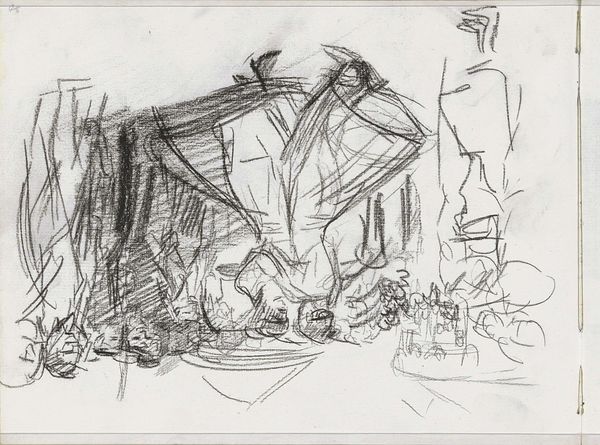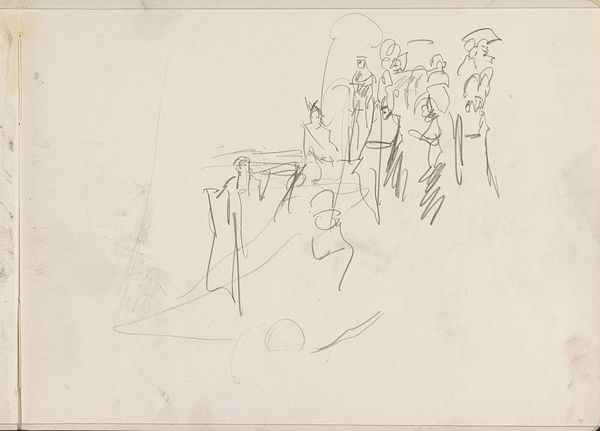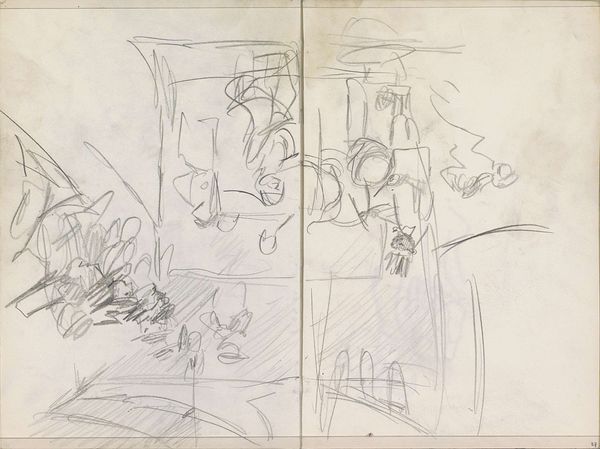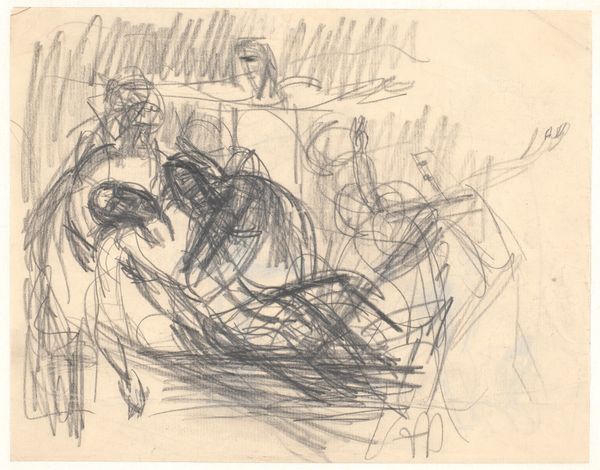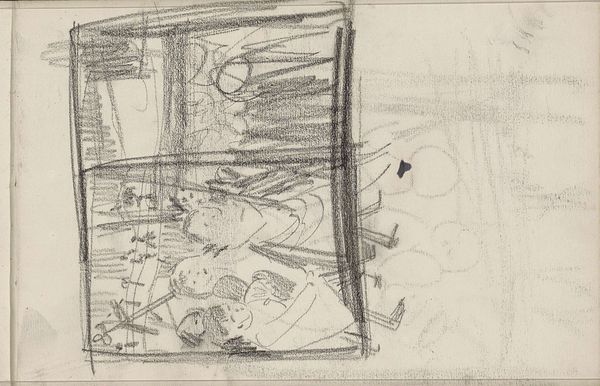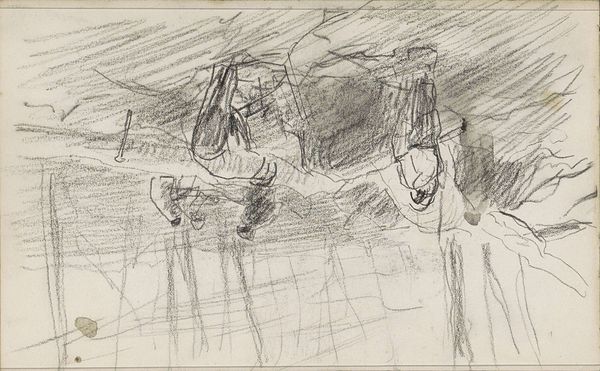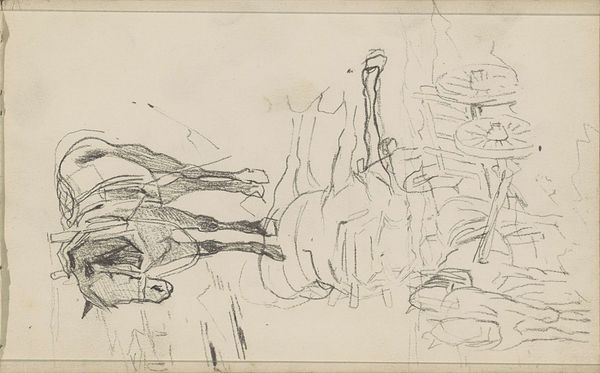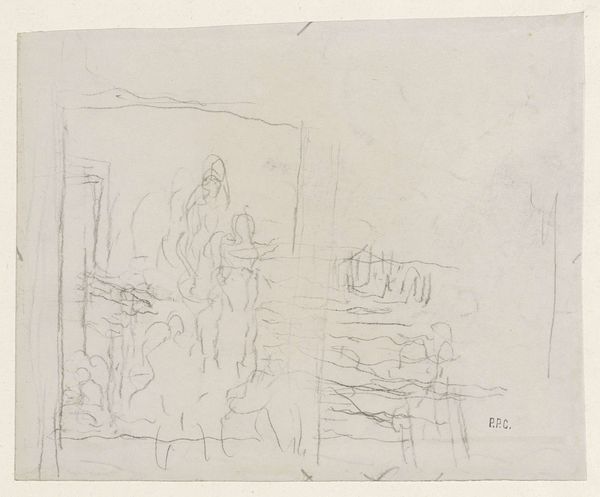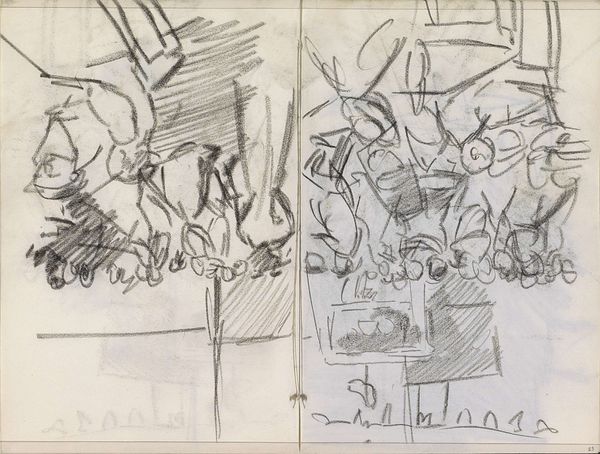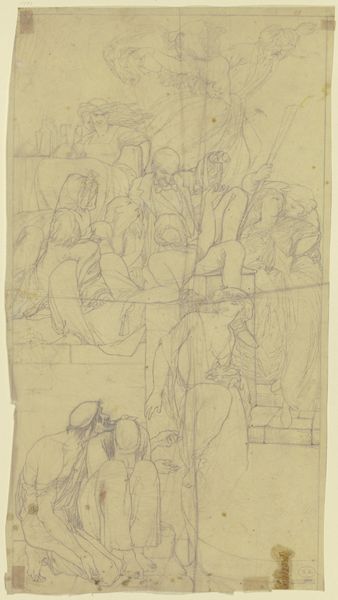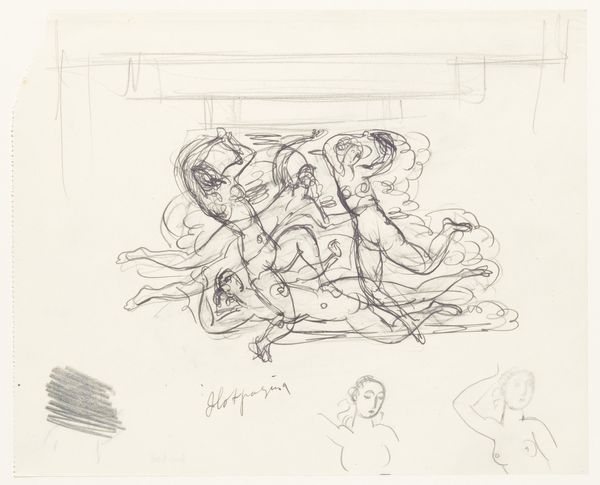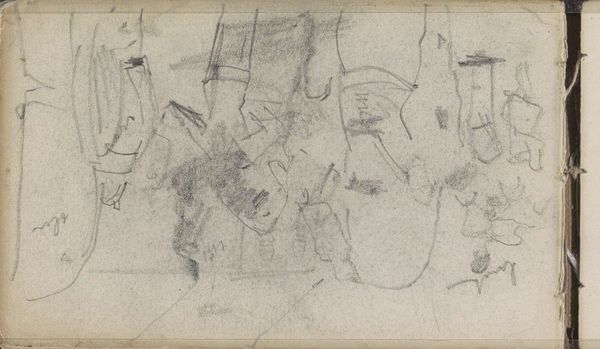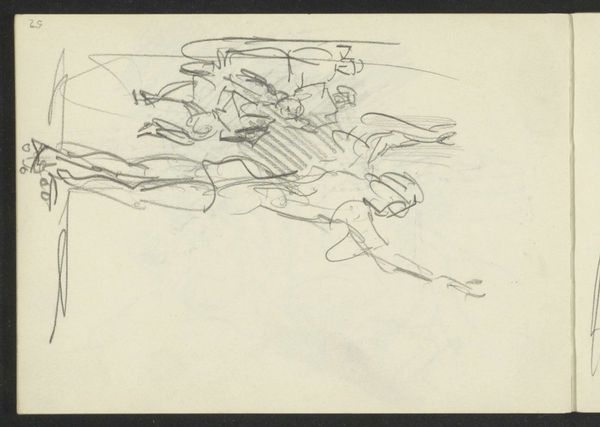
drawing, paper, pencil
#
drawing
#
amateur sketch
#
quirky sketch
#
incomplete sketchy
#
hand drawn type
#
landscape
#
figuration
#
paper
#
personal sketchbook
#
ink drawing experimentation
#
geometric
#
pen-ink sketch
#
pencil
#
expressionism
#
line
#
sketchbook drawing
#
sketchbook art
#
modernism
#
initial sketch
Dimensions: height 91 mm, width 151 mm
Copyright: Rijks Museum: Open Domain
Editor: We are looking at Leo Gestel's "Wielrenners rijden een wedstrijd" which translates to "Cyclists riding a race," a pencil and ink drawing on paper made sometime between 1891 and 1941. It's held here at the Rijksmuseum. The sketch feels really frantic to me, almost as if the cyclists are just a blur of motion. What do you see in this piece? Curator: What immediately strikes me is the artist's use of line. Observe how Gestel employs rapid, almost scribbled lines to convey not just the form of the cyclists, but also the sensation of speed and movement. It’s a study in dynamism, achieved through purely formal means. Do you see how the overlapping lines create a sense of depth, despite the flatness of the page? Editor: Yes, I see that. The lines definitely create a sense of the cyclists pushing forward and away from each other, some are bigger and closer. It's almost like you're seeing several stages of the race simultaneously. How would you classify it? Curator: Indeed, it’s this very simultaneity that is compelling. Classification is not important, but, one might argue that its fragmented, multi-perspectival representation anticipates certain modernist techniques. Also note how the pencil and ink, humble materials, are elevated here through Gestel's expressive handling. The medium becomes integral to the message of velocity and transience. How do the textual annotations figure into your understanding? Editor: Oh, I missed those initially. They seem like shorthand notes, perhaps jotted down as reminders. Looking at the text, maybe it underscores the immediacy and the spontaneous character of the drawing. Are they a formal feature of the same value? Curator: Precisely! They’re integral, because they pull us back to the surface, reminding us that this is, above all, a two-dimensional plane activated by line and mark. The materiality. Gestel's intentional, albeit rough, marks are critical. Ultimately, our observations enhance the piece as a visual artifact. Editor: That's a good way to understand this! I see this work from a completely different view now.
Comments
No comments
Be the first to comment and join the conversation on the ultimate creative platform.
